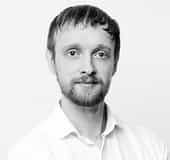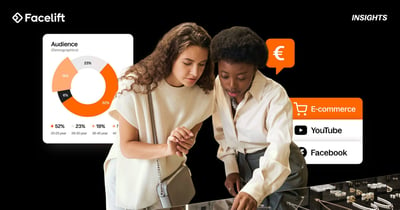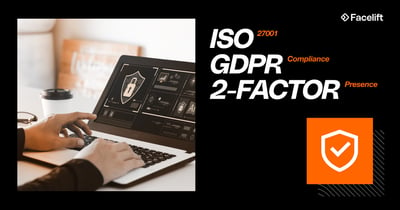Today, the synergy between social media and organizations of all types is more crucial than it has ever been in the past. Social media isn't new anymore, despite what some people may have you believe, and most large enterprises are well aware of this by now.
But not all organizations have such an easy time breaking into social, and doing it right. There are many industries that simply aren't as glamorous as others, and while retail, cosmetics, sports, and entertainment have long taken center stage, there is hope for the rest of us!
I'd like to focus on insurance companies and social media in particular because we've long seen our clients in these sectors push extra hard to be successful compared with their peers in other industries.
You know you're not dull. I know you're not dull! But do the masses? It is best not to take any chances on social media. Here are some ways that insurance companies on social media can succeed and thrive.
Read to the end to find out how Facelift has already helped one major insurance company find success on social with our powerful Social Share app and employer branding capabilities!
The importance of social media in the insurance industry
As with just about any company, insurance companies can take advantage of social media via the following points:
Transparency and trust
For insurance companies on social media, platforms like LinkedIn and Twitter offer excellent paths to establishing transparency among the most relevant audiences. These are some of the strongest domains in which to share company updates and industry insights and engage in thought leadership.
Traditionally, "dry" businesses have often had a harder time establishing trust, and insurance is not always well received by the masses despite how essential an aspect it is in our daily lives. Social media is the perfect place for insurance companies to break away from this notion and show their communities that they are people, too.
Storytelling for relatability
Storytelling is a potent tool for insurance companies to connect with their audiences more deeply. Insurance can be an industry often clouded by complexity and formality; sharing relatable, human-centered stories can significantly enhance engagement and trust. Social media platforms like Facebook and Instagram are ideal for this narrative approach.
Here, insurance companies can share a mix of customer testimonials, employee stories, and even day-to-day office anecdotes, all of which add a personal touch to their brand.
For instance, consider a mini-campaign on Instagram featuring short video clips of various employees. From the friendly receptionist who greets clients with a warm smile to an insurance advisor passionately explaining policy details to a customer, these snippets provide a behind-the-scenes look into the company’s everyday operations.
This approach humanizes the brand and helps demystify the insurance process for customers.
Employer branding is one of the most effective ways to humanize and demystify a less glamorous brand on social media.
If you can't make them love your industry, at least make them love you! You can read our guide to employer branding right here if you'd like to start leveraging your awesome talent to grow your social media presence and even attract new talent!
Another powerful storytelling method is sharing customer success stories. For example, a Facebook post could narrate the journey of a community that experienced a natural disaster and how the insurance company stepped in swiftly, not just with financial support but with empathetic guidance and community building through their crisis.
This story would illustrate the tangible benefits of the insurance policy and the company's emotional support and reliability.
Such storytelling efforts reflect the human experiences behind insurance policies, transforming abstract concepts into tangible, relatable narratives.
By weaving storytelling into their social media strategy, insurance companies can effectively convey their values and commitment, making them not just peddlers of a necessary evil but valued partners in their client's life journeys.
Personalized Customer Engagement
Platforms like X and Facebook offer unique opportunities for insurance firms to interact directly with their audiences. This personalized touch can transform a bland, one-size-fits-all communication style into a tailored experience for each customer.
For example, an insurance company could use X to respond promptly to customer queries, addressing individual concerns with personalized advice.
This approach resolves issues efficiently and demonstrates the company's commitment to individual customer care.
Similarly, on Facebook, insurance firms can create community groups where customers can discuss their experiences and offer peer-to-peer advice, with the company facilitating these conversations and providing expert insights when necessary.
Moreover, personalized engagement can extend to celebrating customer milestones. This is a particularly effective tool for insurance companies engaging in B2B services who may have very large, high-profile clients. While it could work for individual clients, offering this level of personalized support may become unsustainable in many cases.
This is one of the biggest challenges that insurance companies on social media will likely face. Taking the time to engage with individual customers can be time-consuming and complex. In this case, it's best to pick and choose your battles. A well-scaled social media management team can help make this process easier, but there are other solutions as well.
Facebook, for example, has a great customizable chatbot for its Messenger services that can help create experiences for visitors to your page without bogging down your customer service.
Just be careful with relying on chatbots alone!
Facelift can greatly simplify this process! If your organization is interested in providing large volumes of personalized customer engagement, the best way you can do that is with our centralized inbox. This allows all your social media community management to take place in one place and be easily sorted according to the platform and user!
What does this mean? It means your social media team can delegate roles and create custom inboxes that suit only their specific needs. It's an invaluable tool for any company with multiple teams operating on social media at scale.
Key strategies for insurance companies on social media
Here are a few concrete ways that insurance companies and social media can be wonderfully compatible:
-
Showcasing the human side of insurance: LinkedIn is a prime platform for insurance companies to showcase their employees and company culture, adding a human touch to the brand. In fact, we've seen it happen with tremendous success.
-
Leveraging user-generated content: Facebook and Instagram are ideal for encouraging customers to share their positive experiences with the company, enhancing credibility and trust. Take a look at our longer guide to building the best UGC and using it to its fullest potential.
-
Educational content for better understanding: YouTube and Instagram effectively share educational content, simplifying complex insurance topics through engaging videos and infographics. Perhaps a video demonstrating the onboarding process? Or, what steps to take to get started with your insurance products!
-
Engaging responsively with social listening: X's real-time nature makes it perfect for insurance companies to engage in social listening and respond promptly to customer feedback.
-
Promoting community involvement: Sharing the company’s involvement in community projects on Facebook and Instagram can humanize the brand and show a commitment to societal well-being. It's also a great place to demonstrate corporate responsibility and pursuit of popular initiatives: demonstrate that your organization does good in the world!
- Explore short-form video: TikTok may not immediately come to mind when you think of insurance companies and social media, but perhaps it should. TikTok and other short-form platforms, such as Instagram Stories, are actually the perfect place to create a thematic series of videos. An insurance company could do an ongoing series of happy customers telling their stories. Short-form video doesn't need to be complex or expensive, either, and it is among the most effective social media content formats out there right now. Read our free complete guide to short-form video content here.
Publishing creative and humorous content
Just like dating, infusing creative and humorous content can significantly elevate appeal! While insurance is traditionally viewed as a serious business, incorporating light-hearted and creative content can make it more accessible and engaging to a wider audience.
For example, an insurance company might create a series of humorous yet informative cartoons or memes that playfully explain insurance terms or debunk common insurance myths.
These could be shared on platforms like Instagram and X, where visual content tends to have a higher engagement rate. The key is balancing humor and informativeness, ensuring the content is entertaining without compromising the subject matter.
By incorporating creativity and humor into their social media strategy, insurance companies can break down the barriers of the typically formal insurance world, making their brand more approachable and relatable. This approach humanizes the brand and makes insurance topics more digestible and engaging for the average social media user.
Influencer Collaborations
Influencer collaborations present a unique opportunity for insurance companies on social media. We've all seen the high-end fashion brands on Instagram taking advantage of jet-setters and models, but insurance? Really?
Again, why not?
The key is to identify influencers who align with the company’s values and can authentically convey the importance of insurance to their audience. This might include finance bloggers, lifestyle influencers focusing on family and health, or business leaders understanding the corporate insurance landscape.
Platforms like LinkedIn are particularly useful for finding professional influencers in the financial sector, offering opportunities for collaborations that bring credibility and depth to your brand’s content.
Micro-influencers, known for their high engagement rates and dedicated followings, can be especially beneficial for insurance companies. Their ability to communicate insurance benefits personally and relatable makes them ideal partners.
The main challenge is ensuring the influencer’s content and audience demographics align with the brand’s target market, which requires careful research and consideration. Insurance companies can build sustained credibility and trust through these influencers by fostering long-term partnerships rather than one-off campaigns, effectively broadening their reach.
Utilizing analytics for effective strategy
Analytics are crucial for understanding audience behavior and refining social media strategy for all business types. This information can generate key insights such as the best times to post content for maximum engagement and how social media activities influence customer perceptions and behaviors.
Key metrics like engagement rates, click-through rates, and follower growth can clearly show how effective their social media campaigns are. For instance, tracking the engagement on different types of posts can help identify whether educational content, user-generated stories, or humorous posts are more effective in engaging their audience.
Additionally, sentiment analysis can offer valuable insights into how customers feel about the brand and their services, enabling insurance companies to adjust their strategies to address any concerns or capitalize on positive sentiments. We recommend Talkwalker for social listening and sentiment.
How Facelift is already impacting insurance companies on social media
We have our own success story to share! HDI, a prominent German insurance firm for 120 years, has successfully used Facelift to help expand its reach and sales via LinkedIn.
To do this, HDI took advantage of Facelift's Social Share feature, which allows an unlimited number of your employees to post pre-made content on their social media profiles with just a few clicks.
Their sales team took advantage of this for better personal outreach, especially regionally, which made a huge difference!
HDI actually worked with us in a pilot program that helped pave the way for other successes, so we know what we're talking about when we say that insurance companies can be quite successful on social media.
If you'd like to read about the project and HDI's success as an insurance company on social media, you can read the whole success story right here.

If you're ready to give Facelift a chance or take advantage of our other tools such as quintly, our powerful social analytics platform, or Social Share, which HDI used to reach its success on social, schedule a demo with our product experts now. It's free and the best way to start your future social media campaigns.
No matter your industry, Facelift can help you be less dull on social media. Give it a shot!








